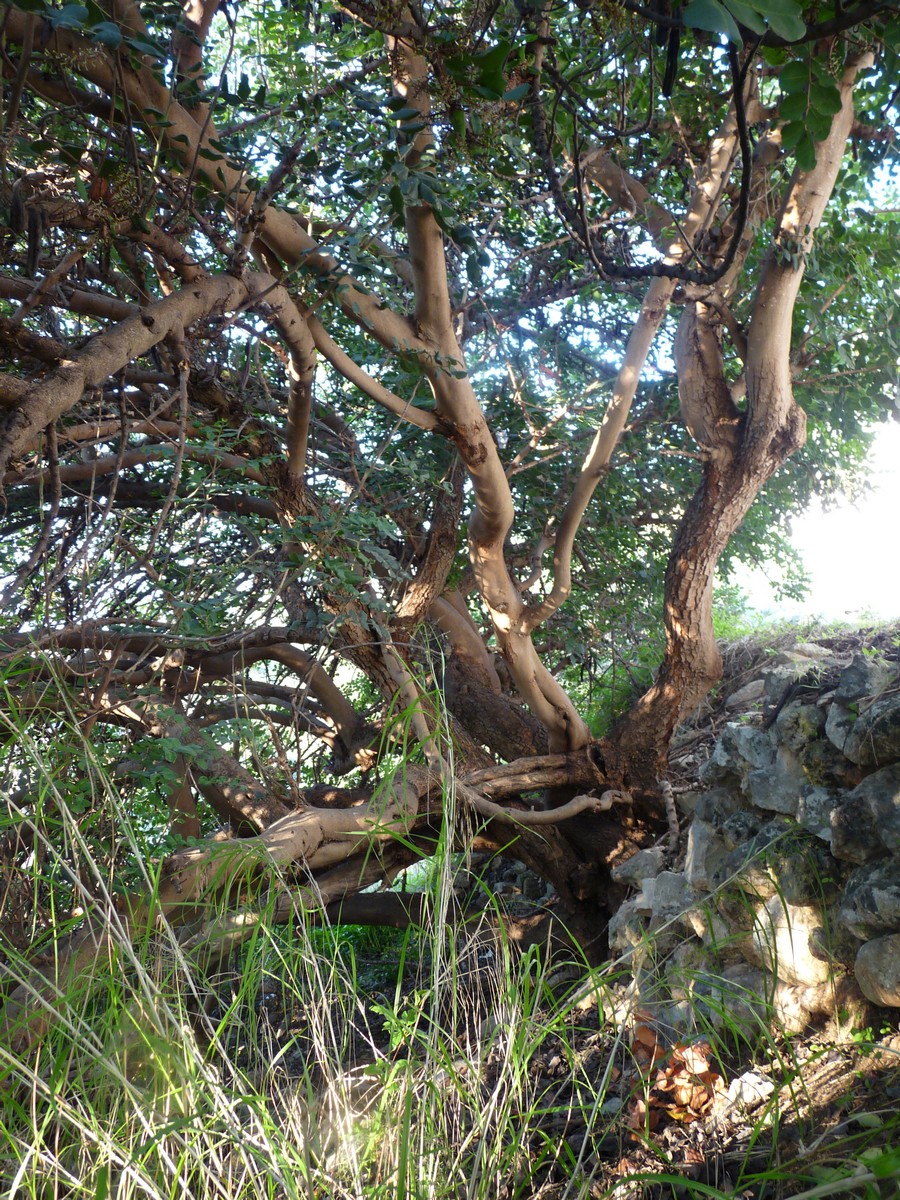
Saint Rita Carob Tree
This post is also available in:
 Italiano (Italian)
Italiano (Italian)
The carob tree of the district of Saint Rita – Lama Picone is one of the oldest trees around Bari, which has survived despite the recent appearance of many residential buildings, like many other ancient plants in the area.
The above-mentioned district was born in the early 1980s, next to “Di Maso” large stone quarry. Nearby, there’s Lama Picone: Lama is actually a river which flows down from the Murge plateau, across Bari area, then reaches the Adriatic Sea. Today, Lama Picone has dried up like all the other similar streams in this area: perched on a ridge of the stream, there is this carob tree, with a 65-ft diameter and nine entangled trunks.
Ceratonia siliqua
-biology and ecology
The carob is a dioecious tree, rarely hermaphroditic, evergreen and with an average height close to 32 ft. It features an ovoid crown, with the lowest branches usually folding towards the ground; the greyish bark, quite smooth in young specimens, tends to crack and become scaly with age – mostly on the main stem.
Carob trees can be found in coastal areas and on hilly ridges not far from the sea, from 0 to over 1.640 ft of altitude; they can easily grow on any type of soil.
– distribution
This is a spontaneous species in all the countries bordering the Mediterranean basin, and in Portugal; in Italy, it is an endemic species in Lazio, Abruzzo, Campania, Puglia, Basilicata, Calabria, Sicily, and Sardinia, while it’s allochthonous in Friuli Venezia Giulia, Liguria, Tuscany, and Molise.
– importance and use
Since ancient times, carob fruits have been highly appreciated both fresh and dried. The pulp, sugary but fibrous, can also be used as a substitute for chocolate in several desserts and drinks.
Carob seed flour is also rich in proteins and low in sugar: it’s ideal to make starch which can be used in baked goods and as a thickener, like eggs. A coffee surrogate can be also obtained from the roasted seeds.
The ancient Egyptians used to extract a kind of honey from the very shell of the fruit: they actually used it to preserve other fruits.
Last but not least, the carob bark contains tannins. Gum and mucilage from the seeds are also full of proteins, calcium and pectin, with very low calories and little fat.
This post is also available in:
 Italiano (Italian)
Italiano (Italian)
Contatti
Quartiere Santa Rita Bari - Bari(BA)
